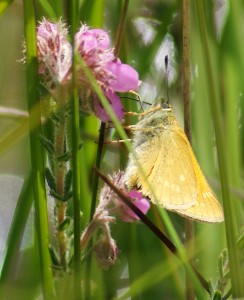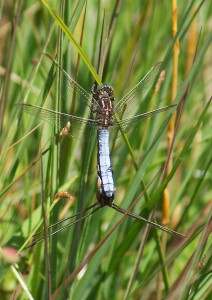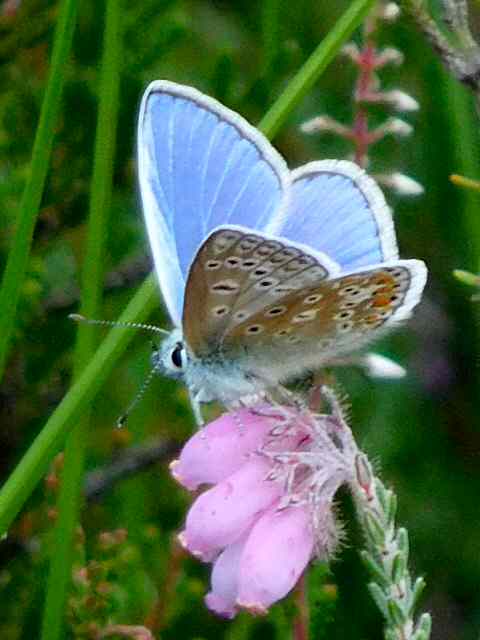
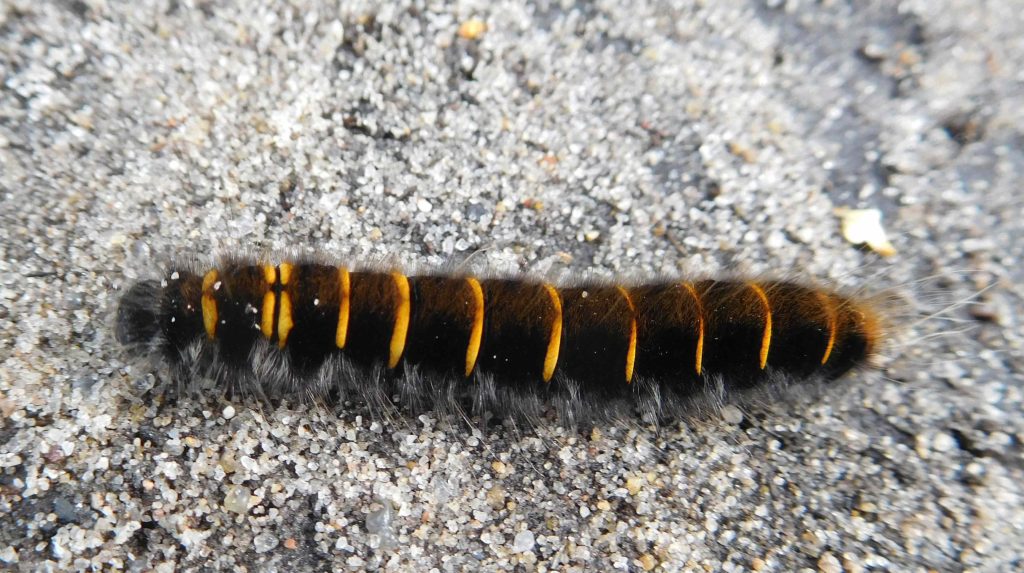
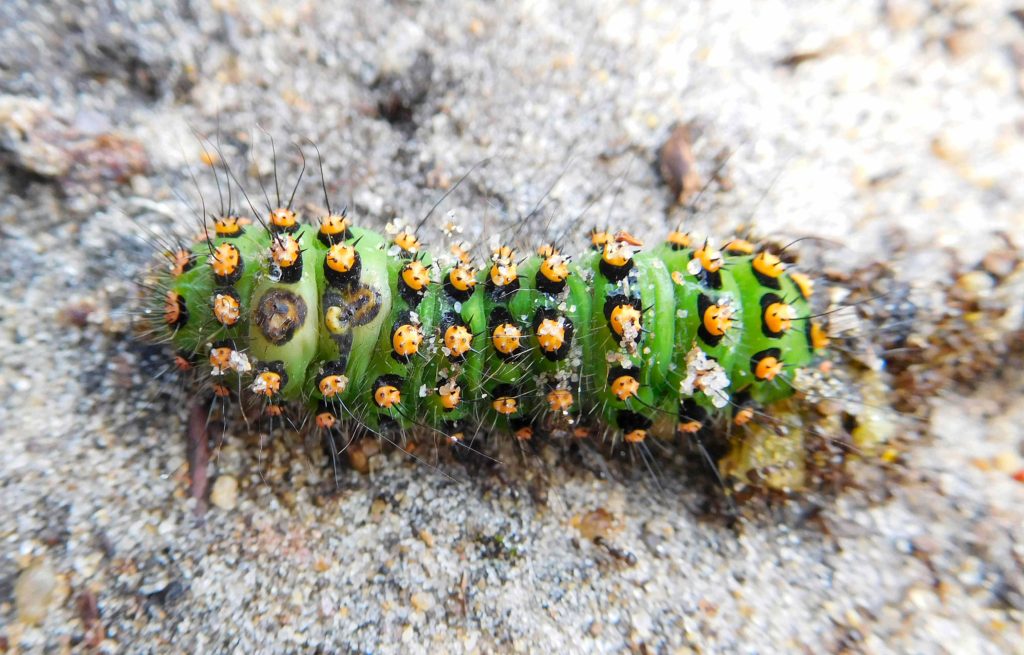
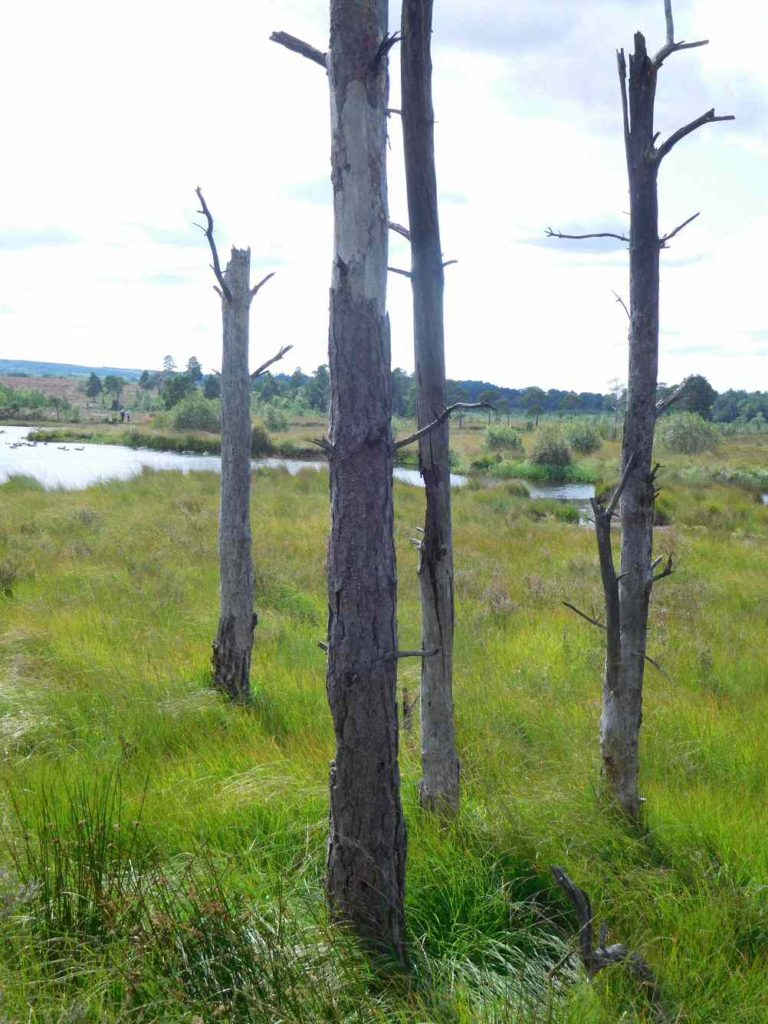
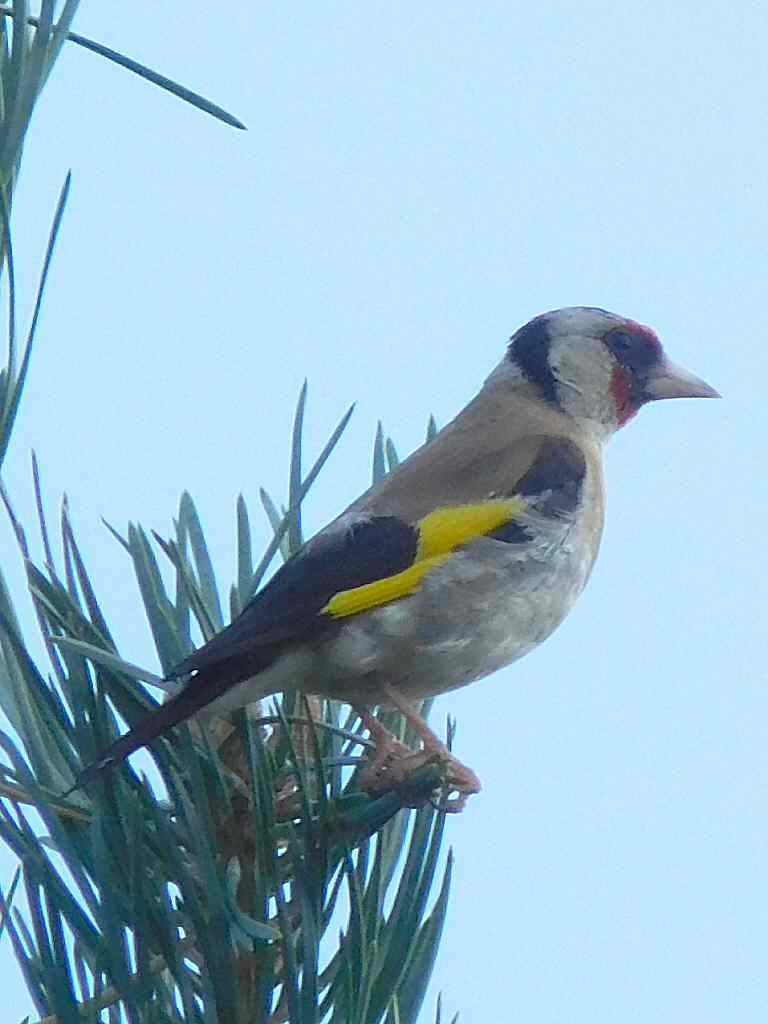
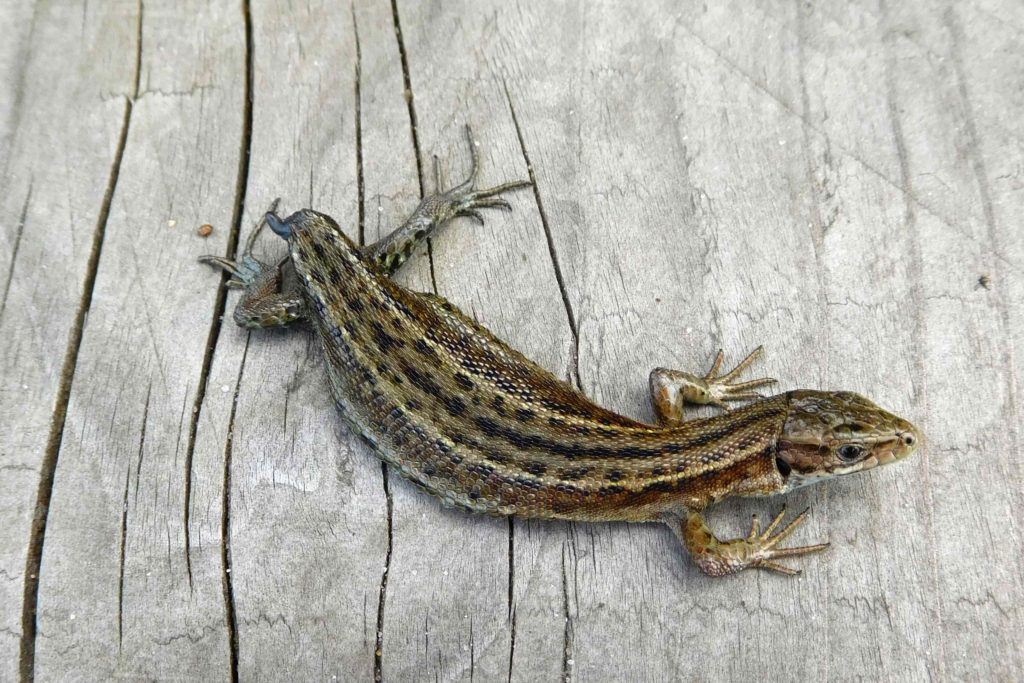
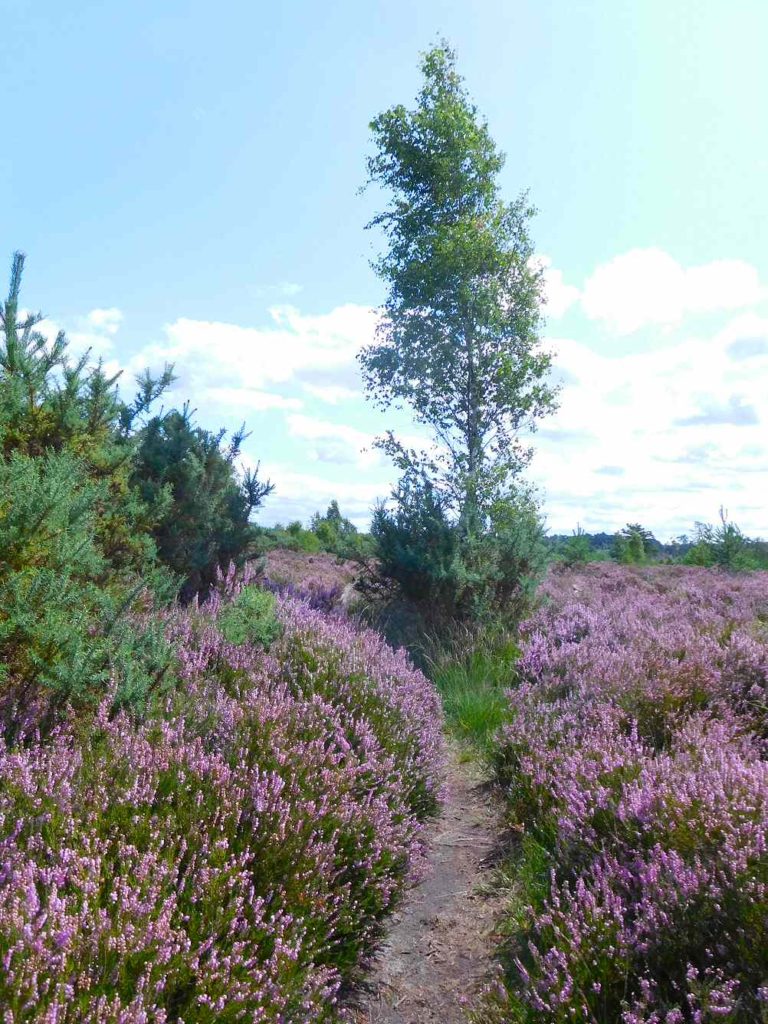
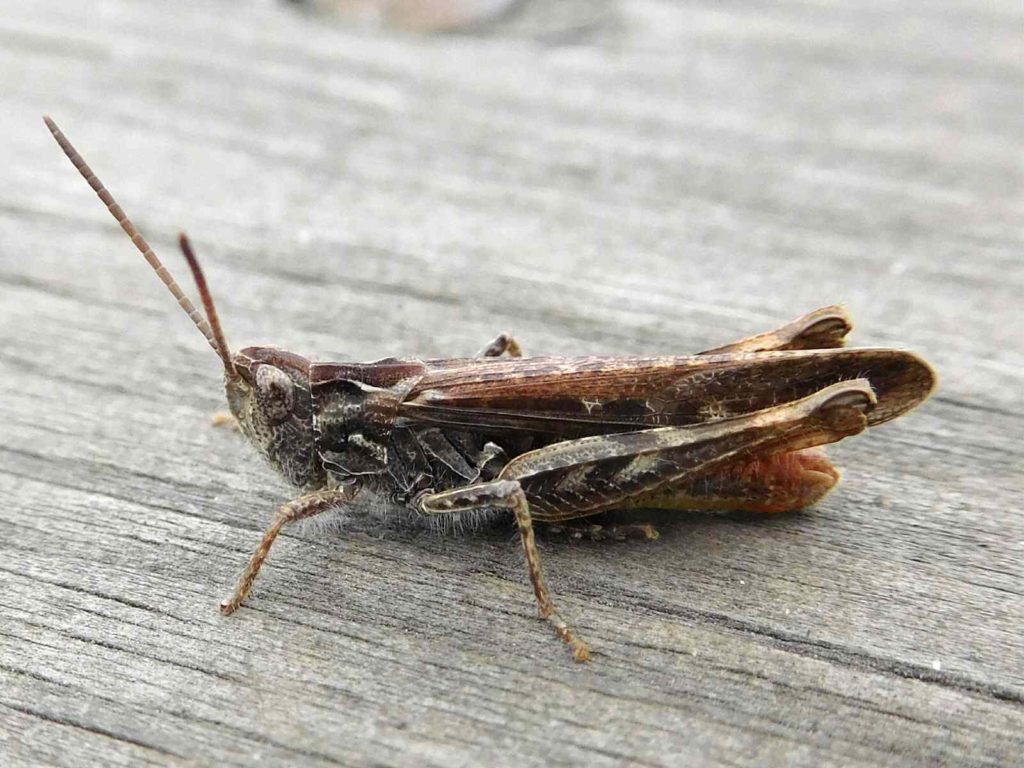
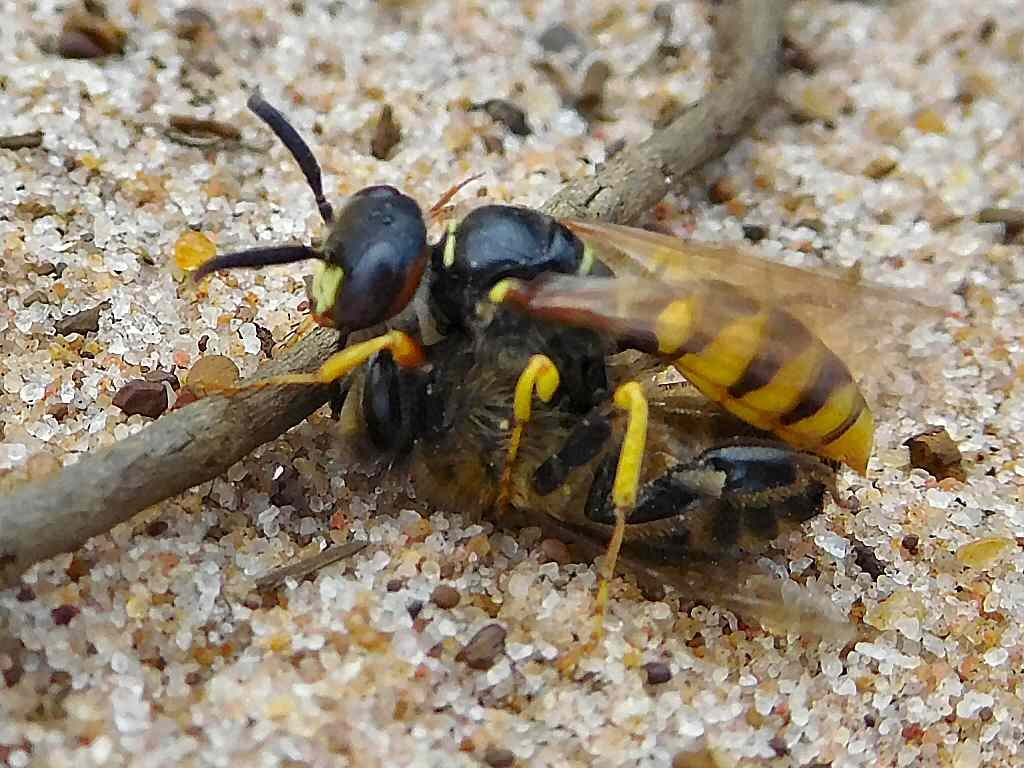
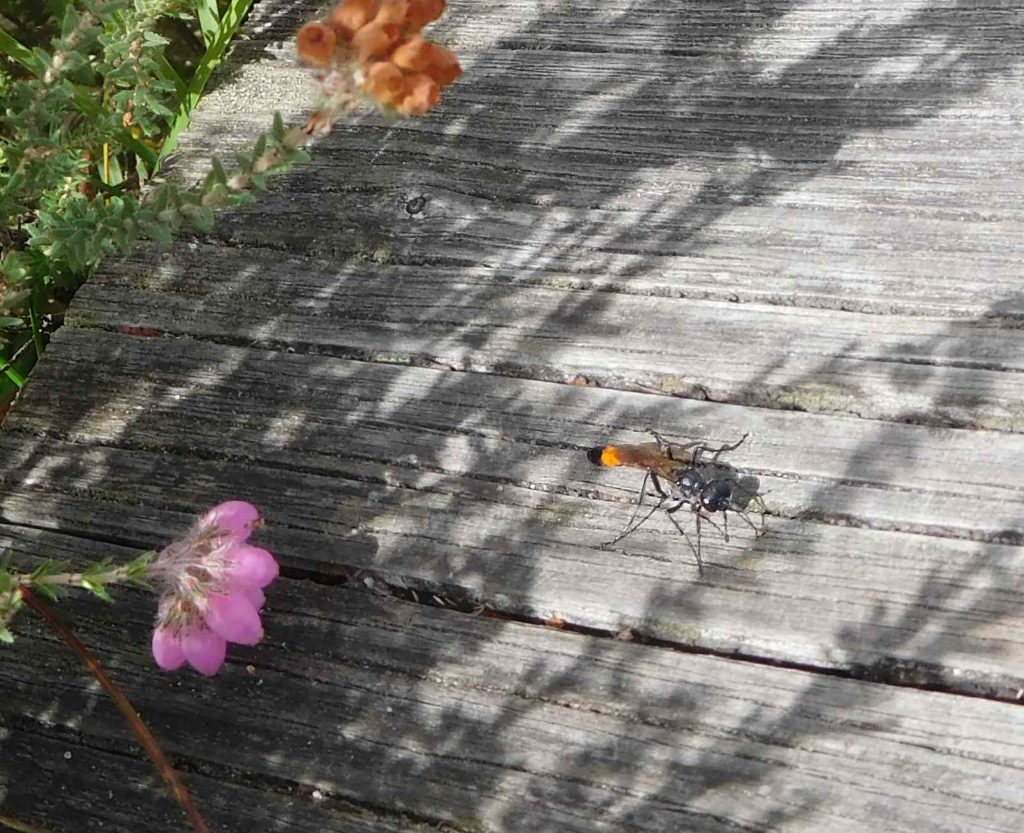
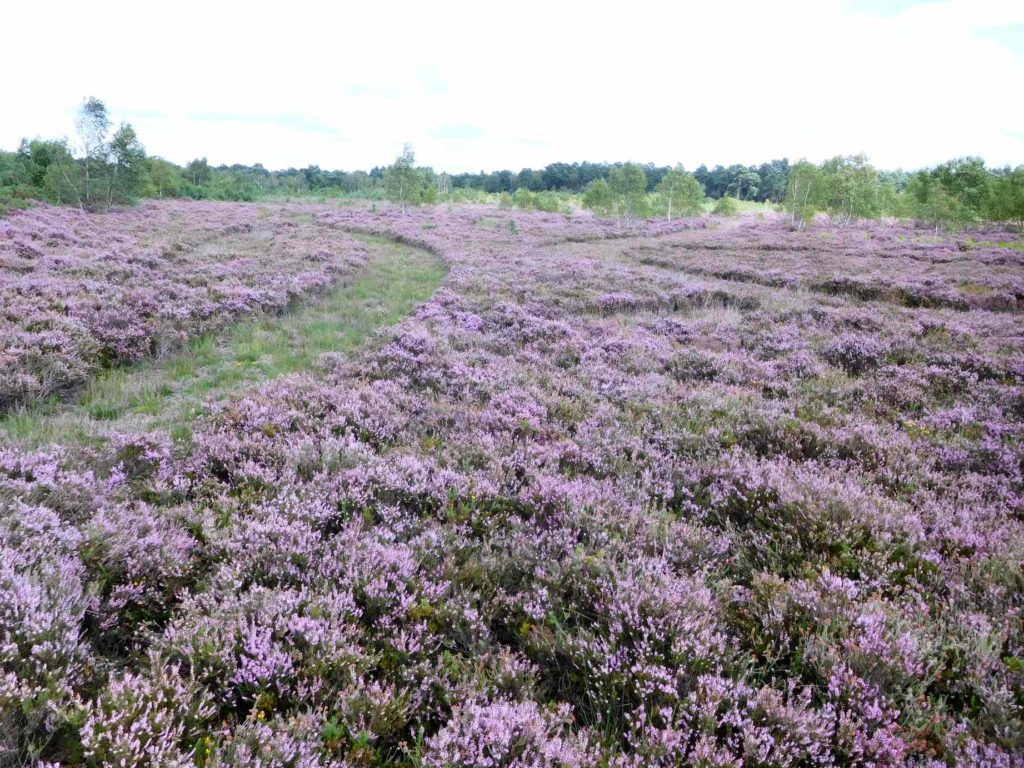
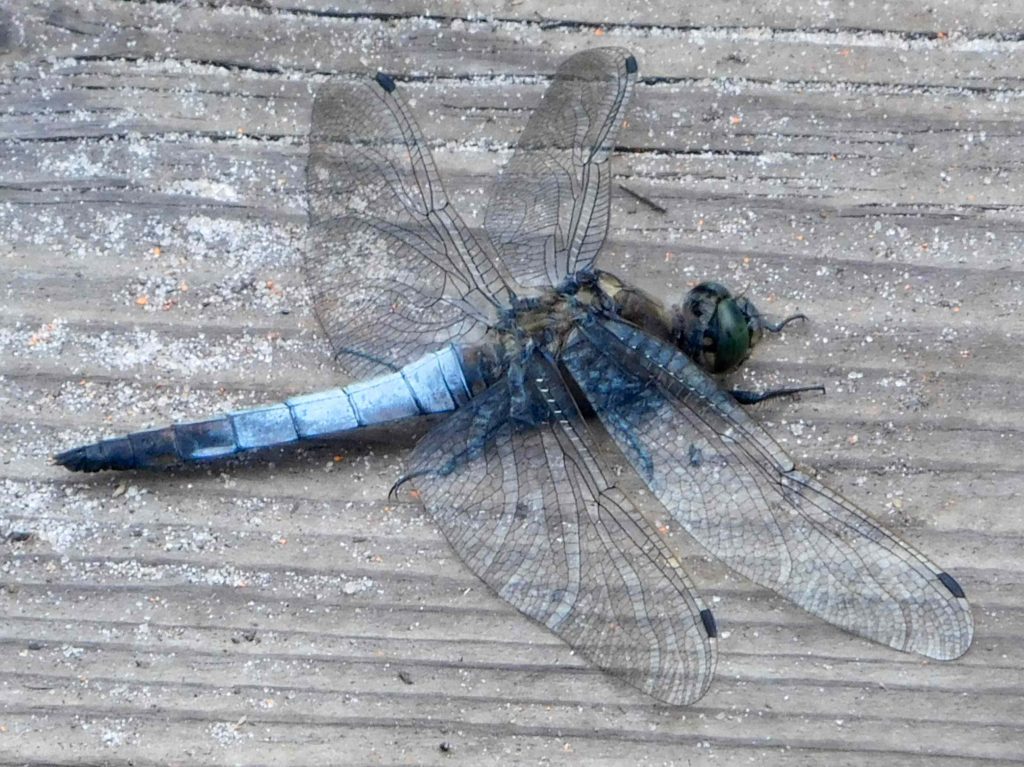
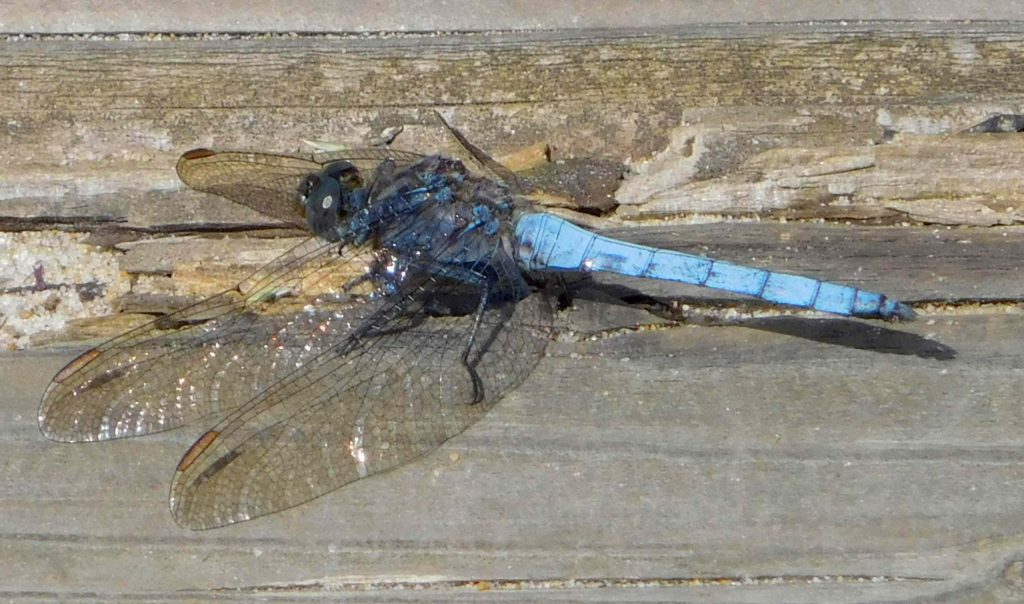
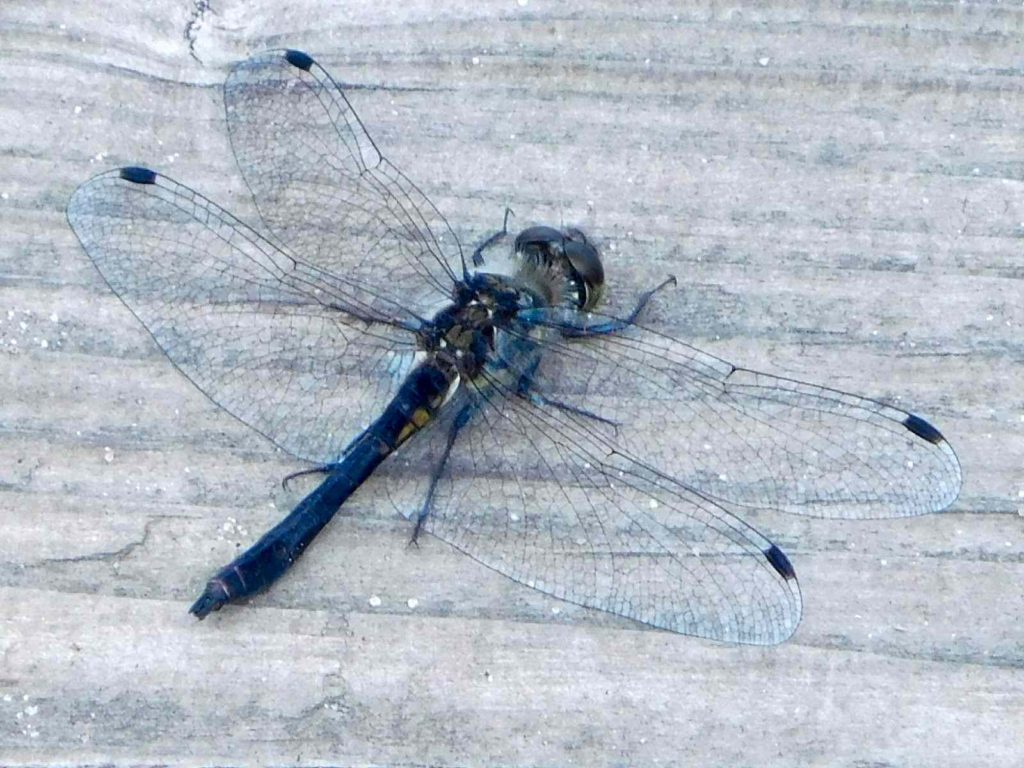
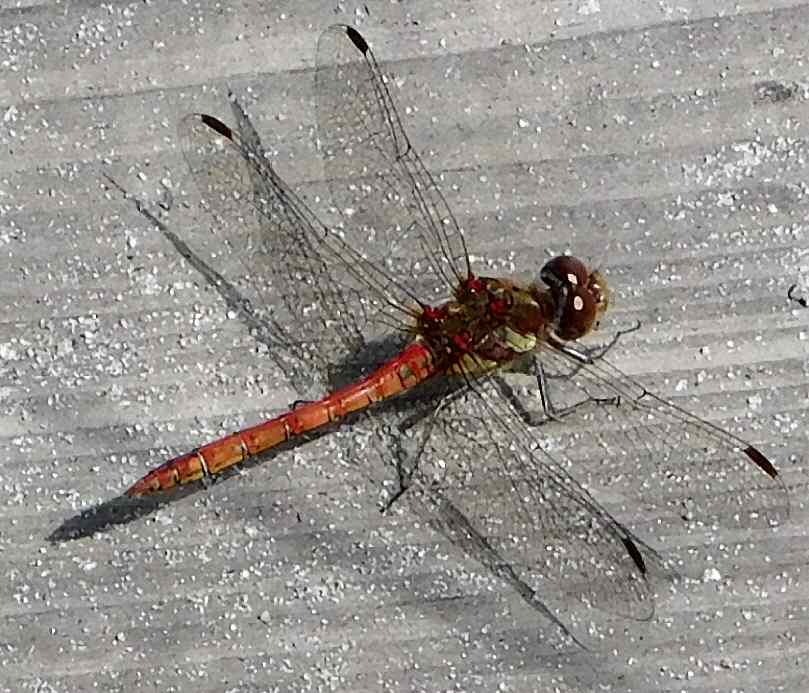
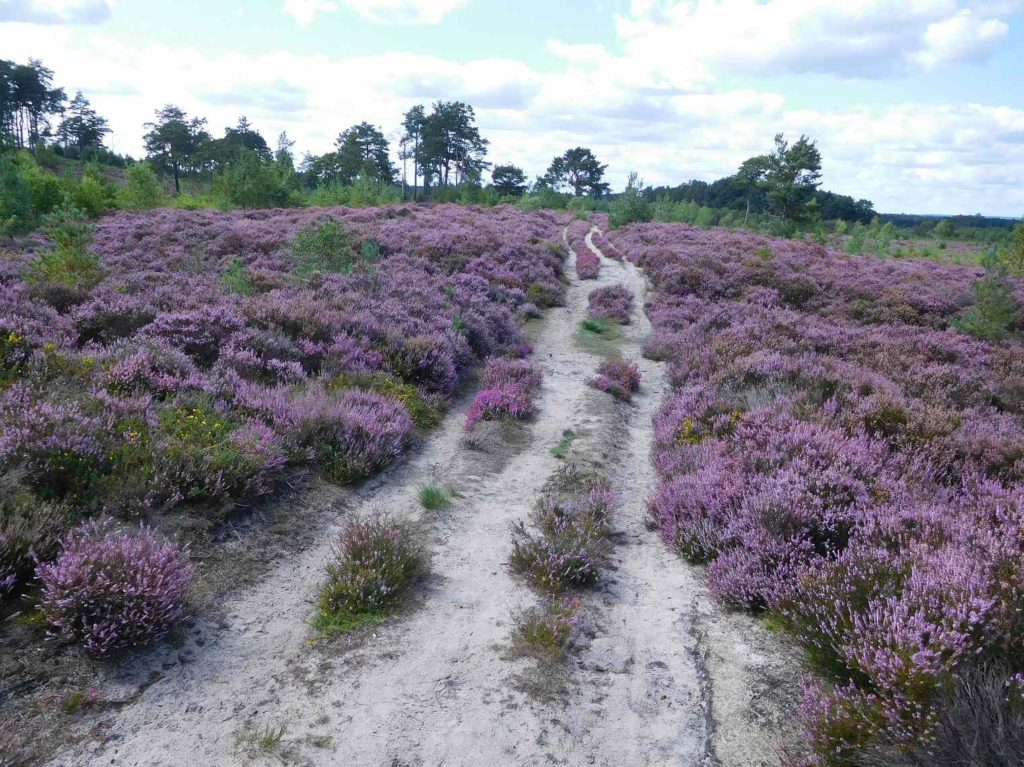
Also saw Common Blue Damselfly, Southern Hawker, Emperor Dragonfly.
















Also saw Common Blue Damselfly, Southern Hawker, Emperor Dragonfly.
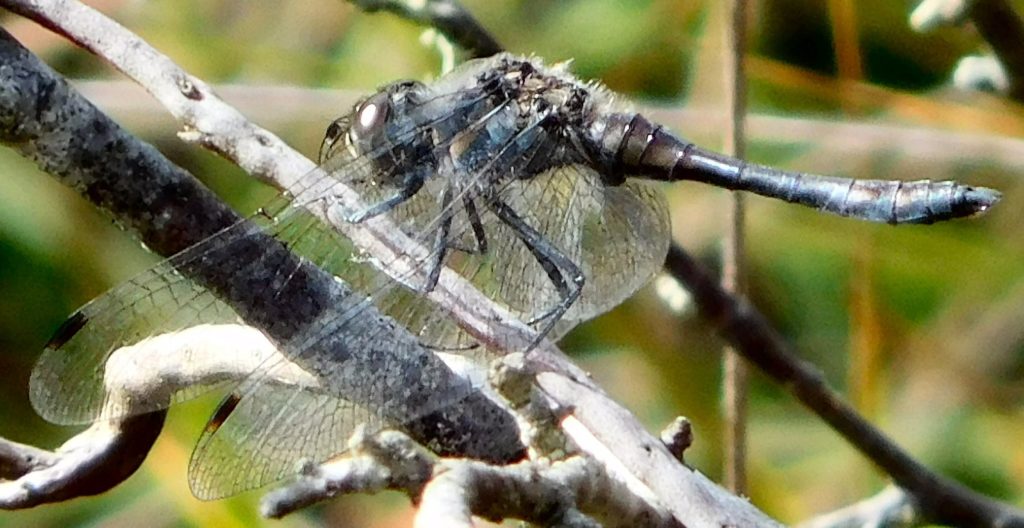
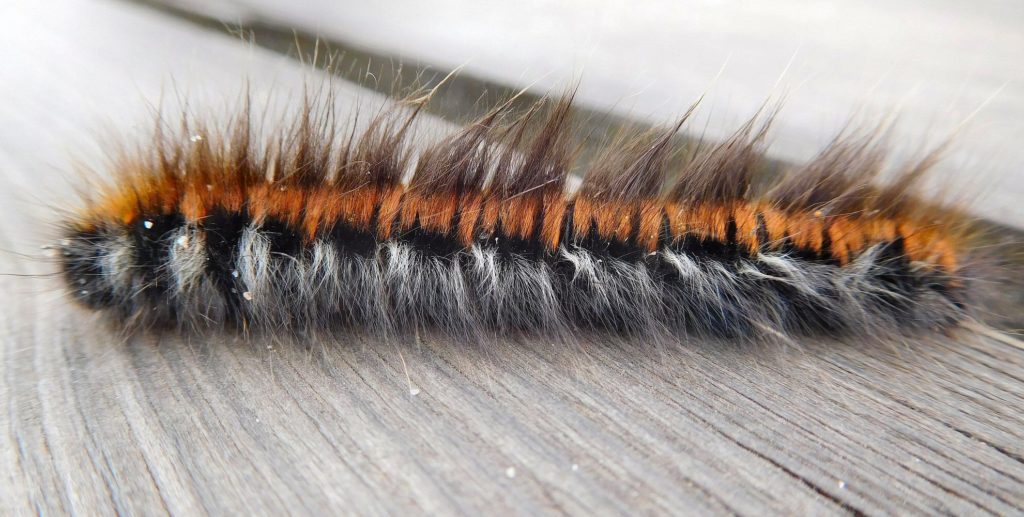
Other insects seen included a few bumblebees and some moths scooting away in the strong wind, perhaps Silver Y.
There were only a few birds about; I saw some swallows, two stonechats, a crow, a jay, a gull, a chaffinch, and a finch-sized bird with a white rump flying into a tree, perhaps a bullfinch. Three mallard loitered on the Moat Pond.
A flash of yellow revealed some Gorse in bloom, alongside some fine purple Bell Heather.
The only fungus to be seen was a brown rollrim. A dead birch trunk was colourful with Common Orange Lichen.
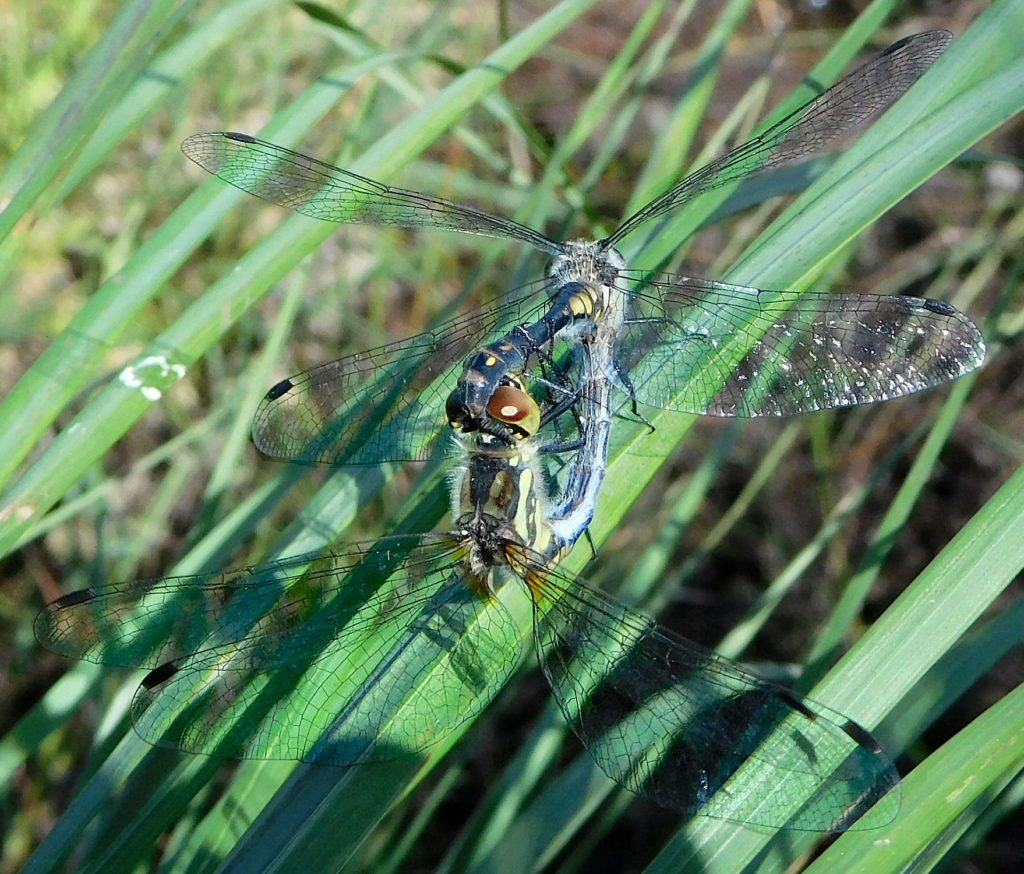
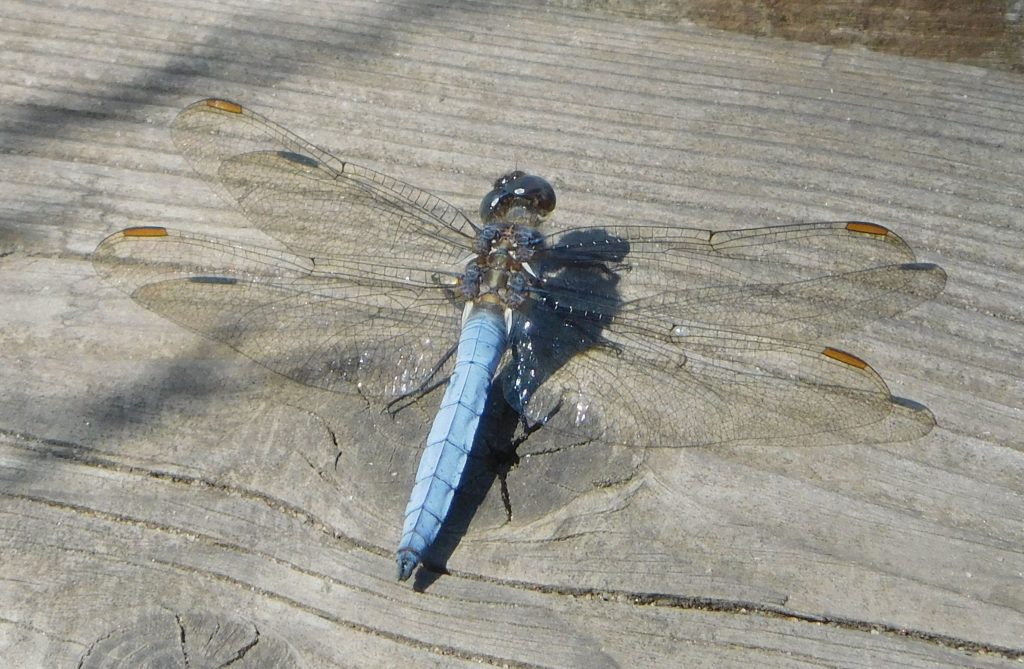
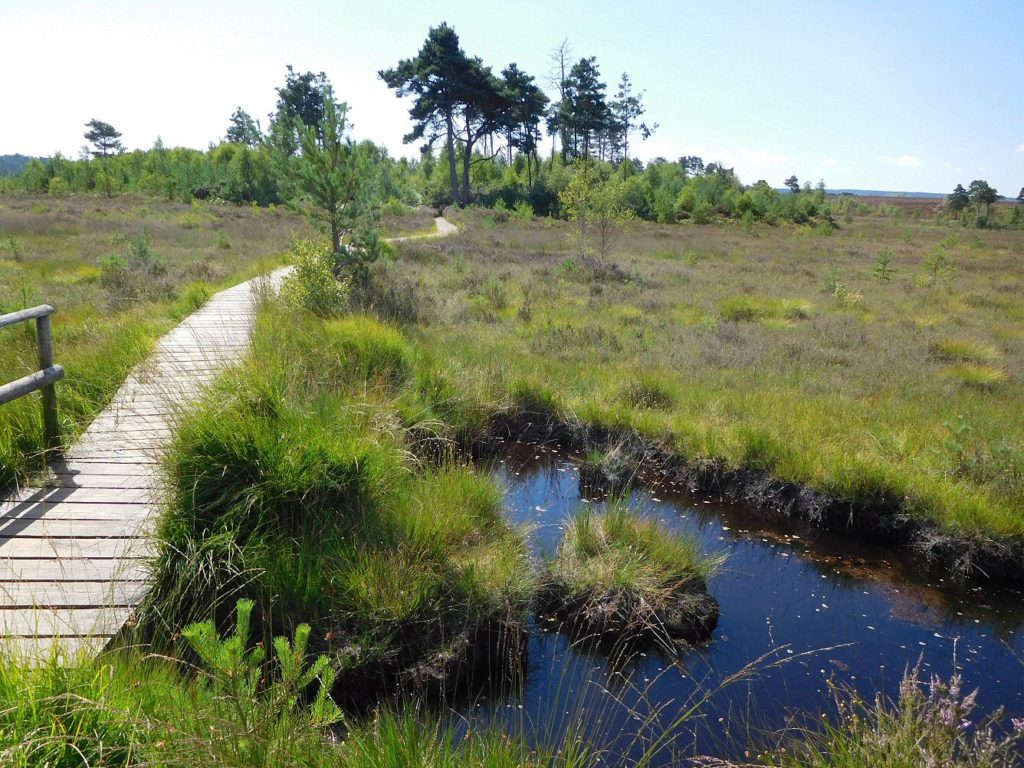
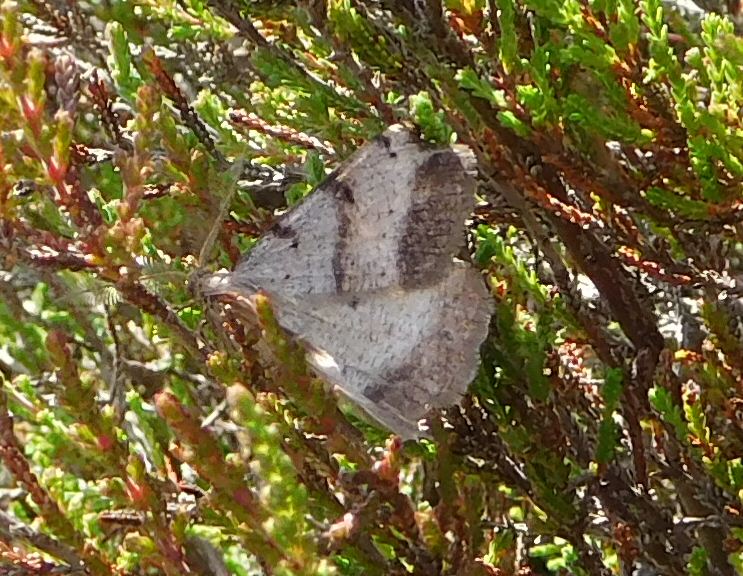
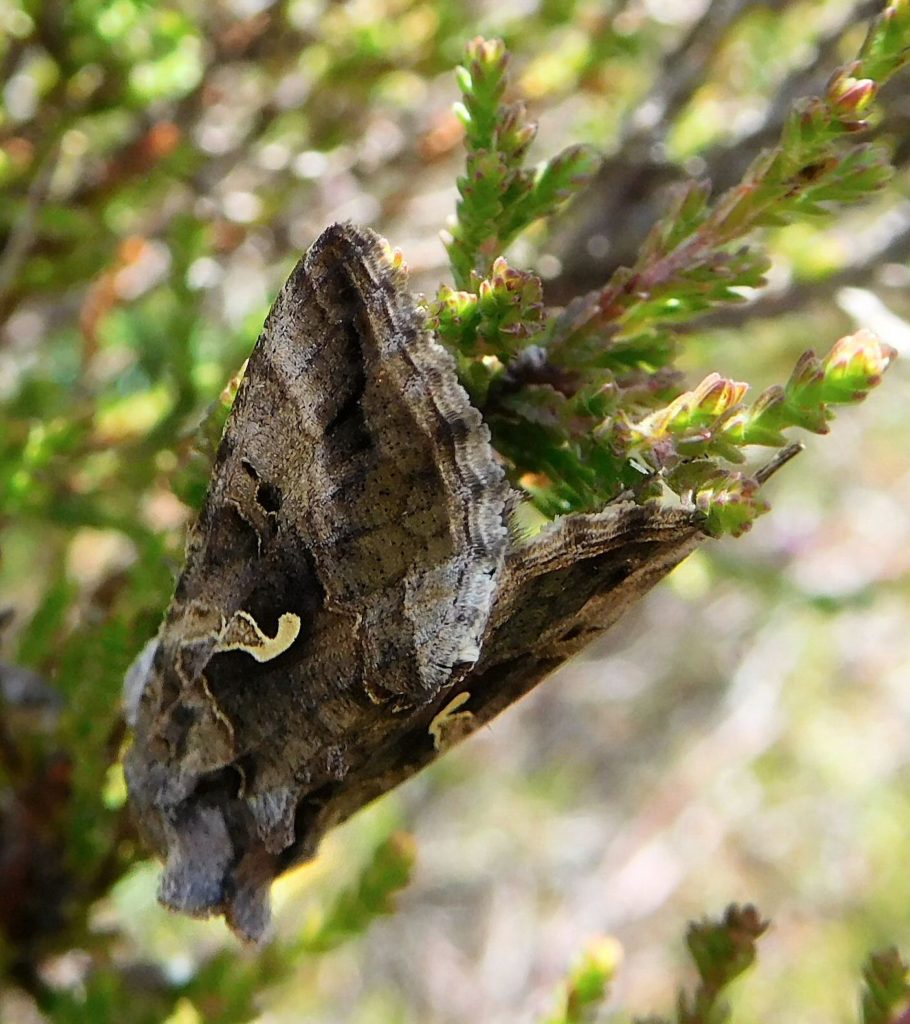
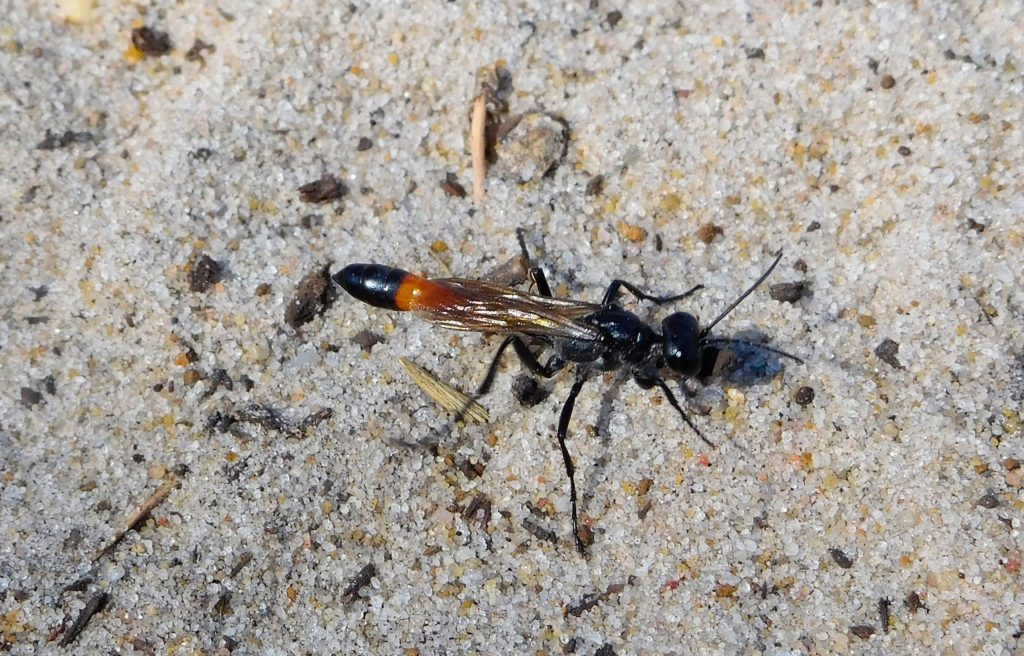
Right at the end of the walk, a huge leaf-green Emperor Moth caterpillar (Saturnia pavonia), whorled with black tufts on each segment, walked briskly like a self-propelled cylindrical concertina across the boardwalk. Just as I grabbed my camera and leant up close, it fell down the gap between two planks and disappeared into the thick green grass below. It was a sight to behold, as long and thick as a finger.
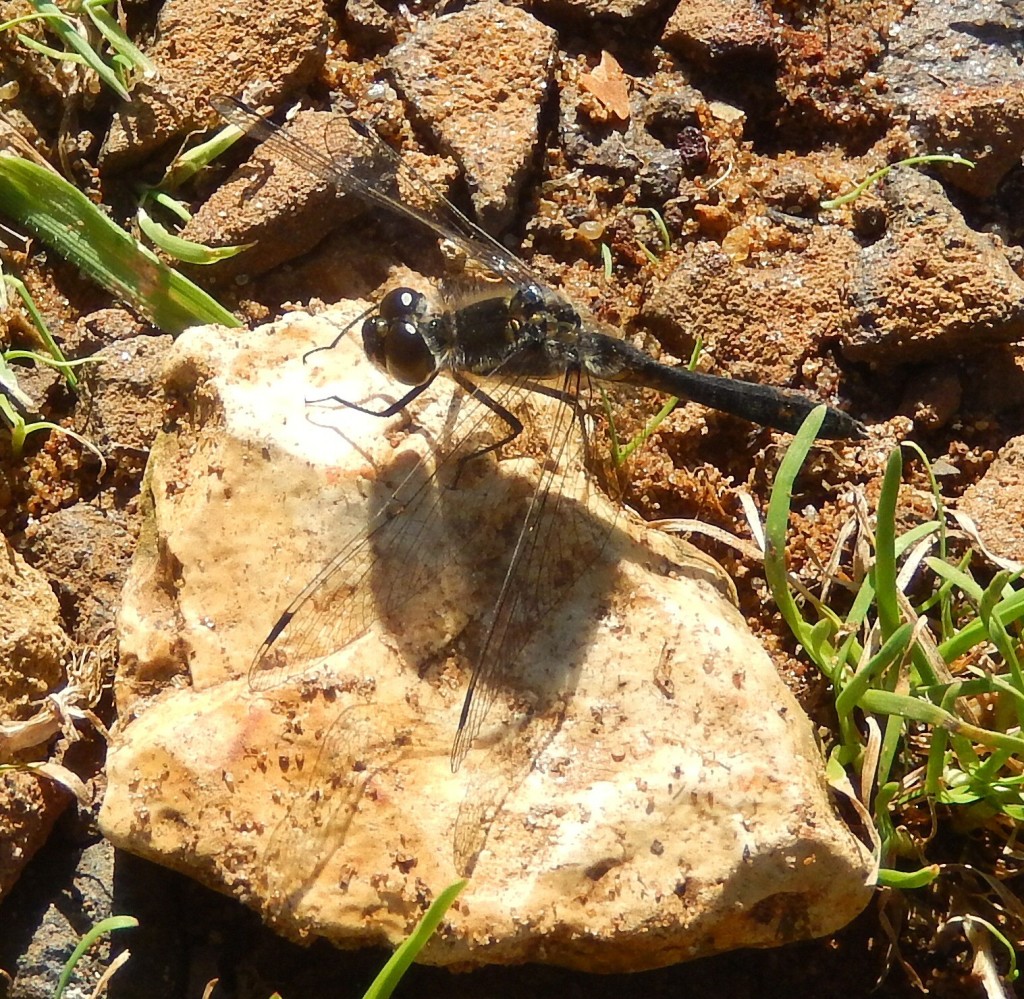
A flock of some fifty Swallows twittered high above the sparkling blue lake among the bog pools. Dragonflies – the occasional Emperor, plenty of small red Common Darters and tiny Black Darters, some Migrant Hawkers – dashed about or sunned themselves on the boardwalks. A pair of Hobbies, those dashing, Swift-winged falcons, soared and watched the Swallows cunningly, waiting for a careless moment. One of the Hobbies swooped down, raced low, agile, among the reeds, up and switchback over a dead tree to snatch a dragonfly on the wing, powered right across the wide bog all the way to the pinewoods. Three pairs of Common Darters in cop, the males leading the females, their claspers about their females’ necks, flew in strict formation like so many Spitfires. A Hobby, high above the bog, accelerated in a long straight shallow dive, for all the world like a Junkers 88 bomber taking careful aim, racing down for a hundred yards at incredible speed to grab a dragonfly: it must have seen its prey all that distance away.
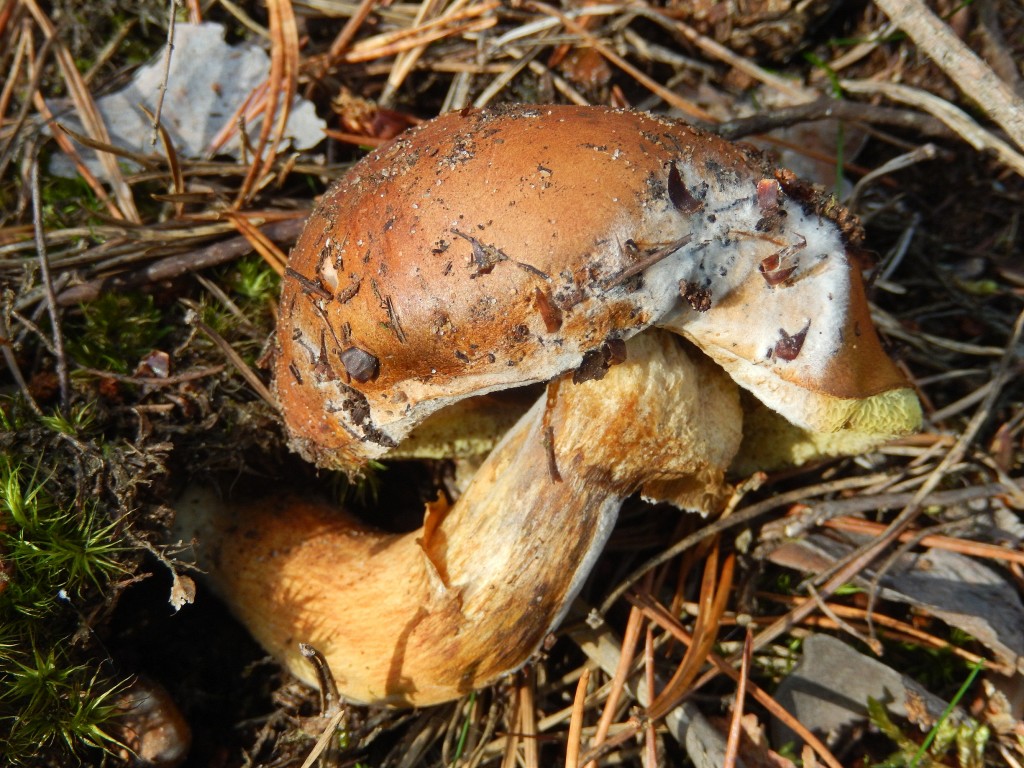
Clusters of the light brown Birch Bog Bolete – yes, it grows under Birches in Sphagnum bogs – are dotted about, their large squarish pores quite unlike the little round holes of the true Cep. Phillips says they’re edible but not worthwhile. This isn’t stopping a pair of plump thirty-something Poles with a sports bag wandering along collecting them (National Nature Reserve? Really?). I greet them, establish their nationality, say my mother used to do the same in the Carpathians and that there aren’t many mushrooms here. The guy with the sports bag shows me a meagre haul of Birch Bog Boletes just about lining the bottom of his bag: he means, he hasn’t found much worth collecting. I try Natsional Natur Reservat and waggle my finger, we part smiling and he shuffles off sheepishly.
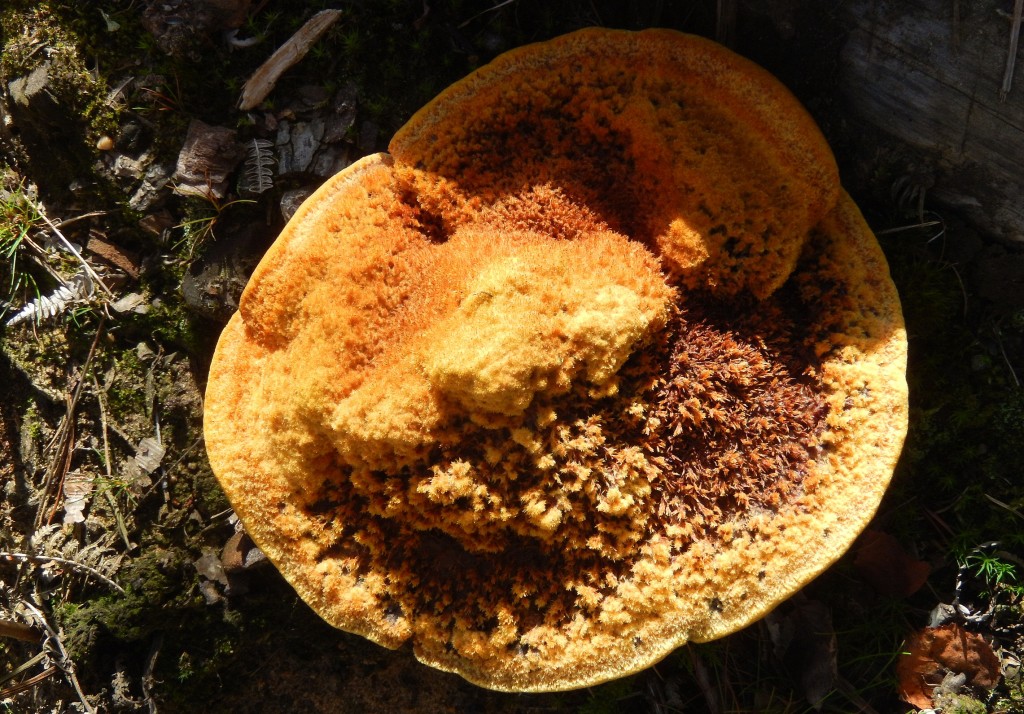
Under some Pine trees, a dead stump, killed by Phaeolus schweinitzii, three or four enormous dinner-plate sized yellow discs, thick and rough with orangey-brown branching tufts: they are overgrown Polypore bracket fungi, dangerous parasites of conifer tree roots. Nobody has given it an English name, which is a pity as the namers could really have fun with it: Yellow Pine Death? Giant Pine Polypore? A magnificent fungus, somewhat alarming if you’re a forester.
On the open sandy heath, some Ammophila sandwasps are still active, perching on the path. A few butterflies – a white, some Speckled Woods, probably a Red Admiral – are about; a very large brown butterfly with agile flight, dancing around a pine trunk and up high, is tantalisingly impossible to get binoculars on, was very probably a Fritillary, in which case it was likely the Silver-Washed Fritillary.
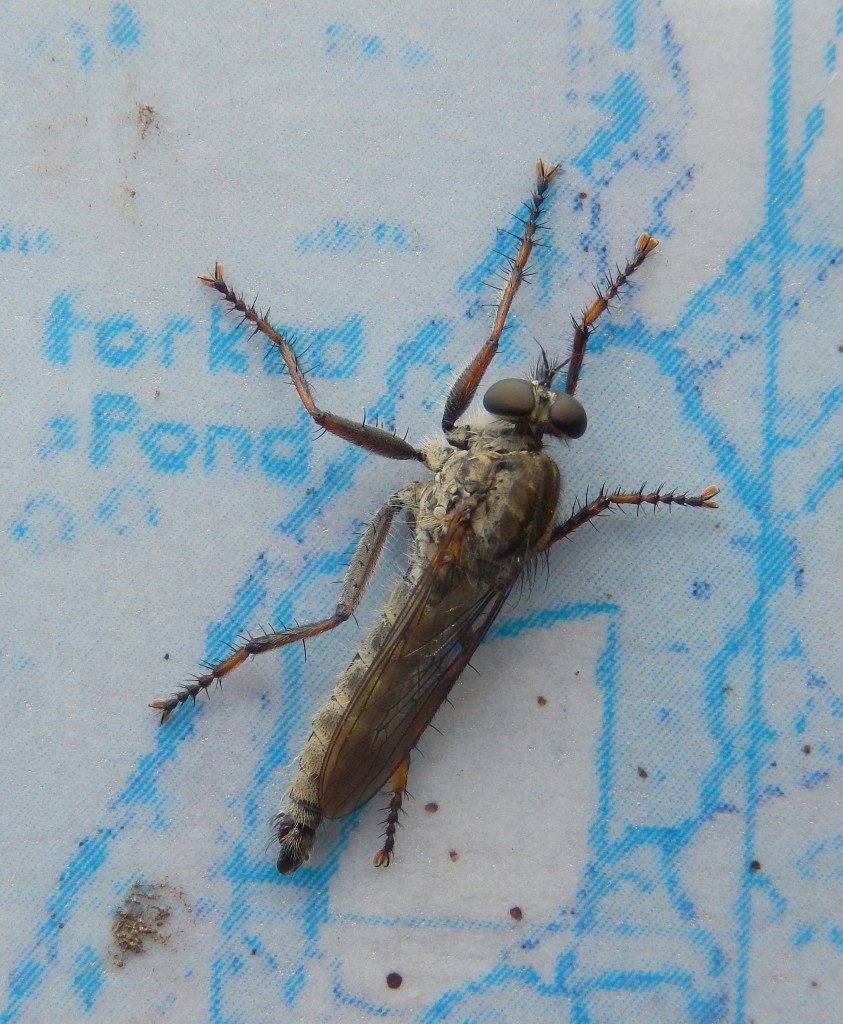
A couple of mean Robber Flies perched on a rather bleached map of the common: they had as Shakespeare said “a lean and hungry look”. They have a tuft of stiff bristles below their antennae to keep their prey from striking them in the head. They wait on a perch – a signboard will do if there’s nothing better – until an unsuspecting fly comes past, then they sally into the air and grab it.
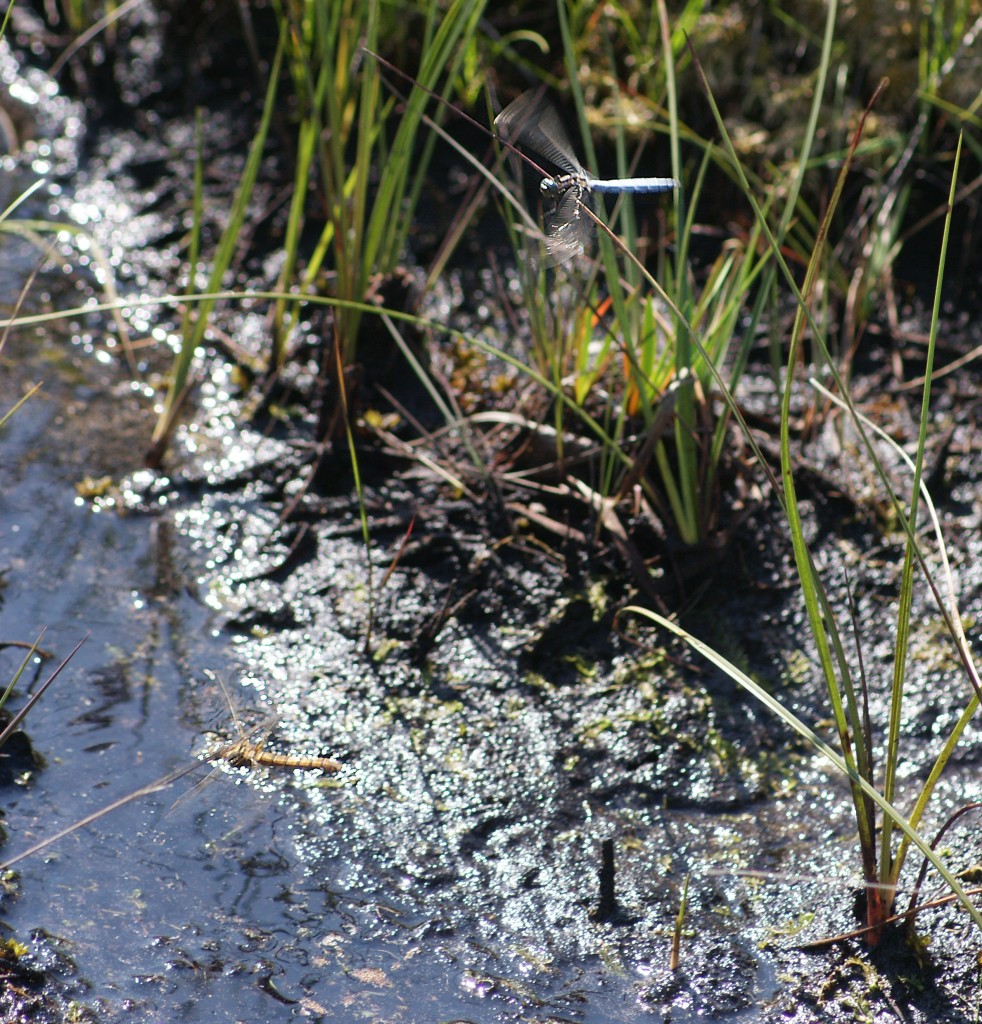
It was suddenly summer again this morning, so I packed cameras, binoculars and a sandwich and went down to Thursley in glittering sunshine. This photo perhaps catches something of the dazzle and sparkle of the bog pools and their shimmering guardians: a pair of Keeled Skimmers (Orthetrum coerulescens) are flying over the water; she is darting down to lay eggs, he is hovering above, guarding her from other males. Their wings sparkle and flash, and it is amazingly difficult to follow, frame, focus and shoot fast enough to get anything like a decent picture. But I rather like the motion blur in this one, and if it’s not perfectly in focus, you know why. I hope you like it too.
I was pleased, too, with this shot of an Emerald Damselfly, the sparkling water behind it forming a pattern of pleasantly out-of-focus circles.
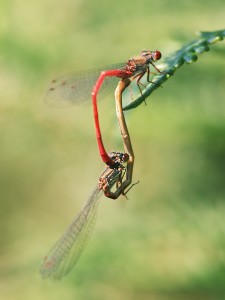
There were quite a few Small Red Damselflies about, mostly single but a few egg-laying pairs; and a modest number of blues, most likely Azures.
Apart from the hundreds of Keeled Skimmers, other dragonflies included Common Darter, Black Darter (I only saw a few females today), Black-Tailed Skimmer (just one), and Southern Hawker.
We saw few butterflies apart from Large Skippers which bustled about flowers near the boardwalk, and little Gatekeepers (I do mean they were smaller than usual) … until we arrived on the amazing Parish Meadow that was once a dump for emptying cesspits. Now it has an ecology strikingly unlike the rest of Thursley Common.
The meadow was full of Meadow Browns, Graylings (mating), Ringlets, Essex Skippers, a Brimstone, Large and Small Whites, and … a Purple Hairstreak (about the Oak trees). The rabbit-bitten pasture, dotted with little flower-stalks of Centaury, was thick with Ragwort, which in turn was richly covered with Cantharid beetles, solitary bees, wasps, and hoverflies and other Diptera. We put up a Silver Y moth which obligingly landed in front of us and perched in the open. We found the traces of a Green Woodpecker killed by a Sparrowhawk; but happily saw a live one in the Oaks nearby.
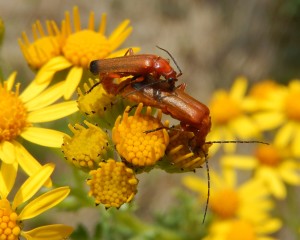
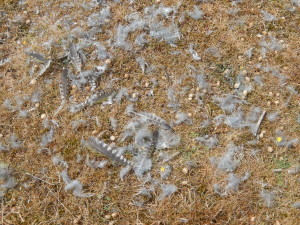
The boardwalks were busy with Lizards and Skimmers sunning themselves.
We met a local group of birders, complete with masses of tripods, telescopes and cameras, and asked if they were looking at the Stonechats. No, they replied, the Hobbies, there are three. We looked up, and sure enough there were three raptors. But in our binoculars, they turned out to be a Kestrel, a Hobby, and a Red Kite! Perhaps there were some more Hobbies somewhere else.
A little way further, absent the birders, we found a dead tree with some juvenile birds perched about it, and a lot of twittering. Yeah, a typical Chiswick Cafe. Some of them were young Redstarts; the others, young Stonechats: pretty confusing. But the Redstarts flew up into a Pine tree – not a Stonechatty thing to do – and sure enough, there was an adult Redstart on a lower branch, plain to see. And a Stonechat adult rasped out its grating call over to the right.
In a group of tall Oaks, we sat and ate a sandwich; and a Spotted Flycatcher flew across and perched on a high dead branch. It spent five minutes looking about, twisting its neck remarkably, but making no sallies. When I was a boy I saw them in the garden every summer; now they’re really something special, like, er, Starlings and House Sparrows.
The sandy heath paths were full of little holes dug by Ammophila Sand-Wasps, and others made by Philanthus Bee-Wolves (or Bee-Killer Wasps). Both are called digger wasps (“Sphecidae”) in most books, and it’s certainly a good name, but the family has been split up, so Philanthus is now in the Crabronidae, which contains most of the old “Sphecidae” (we’ll have to say sensu lato for this); the new Sphecidae (sensu stricto) only contains what used to be the Sphecinae, which includes Ammophila. Rich scope for confusion. Sphex is the ancient Greek word for wasp, and it’s interesting that Linnaeus chose this word for a digger wasp rather than the social wasps, which have the Latin name Vespa for the hornet, and Vespula, little wasp, for common wasps.
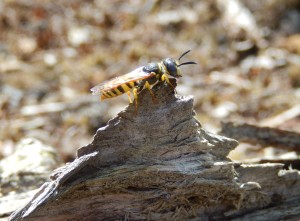
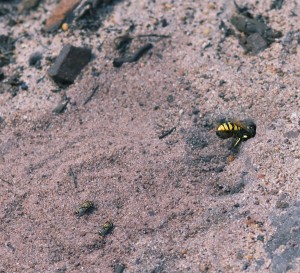
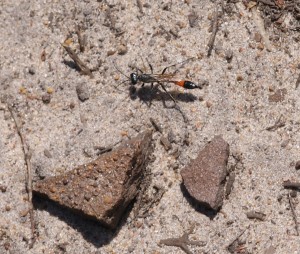
Out of a low bush of willow and gorse right beside a boardwalk came a strange, quiet but insistent squawky chatter of alarm. Peering in between the branches, a small slim dark bird with a long dark tail could be seen hopping about anxiously: a Dartford Warbler. It was extraordinary to be within a few feet of this shy, rare and retiring bird, and watching it for several minutes. There are actually quite a few on the heaths of Surrey and the south coast, but they’re never easy to see—most of my views have been of disappearing rear ends, diving into gorse bushes.

Thursley Common on a sunny July day can shimmer with the wings of dragonflies. Today, hundreds of Keeled Skimmers, joined by plenty of other species large and small – from the mighty Emperor to the dainty Small Red Damsel, made the air seem to sparkle as brightly as the water beside the boardwalk. There were Keeled Skimmers perched alertly on stalks, ready to spring into the air at an instant’s notice; Keeled Skimmers in tussling pairs, their wings rustling and scuffling as they clashed in brief, brutal territorial disputes; Keeled Skimmers in groups of four or five, dashing and swerving over the water; Keeled Skimmers over every pond, bog pool, and lakeside.
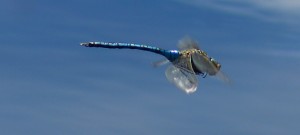
Over one quieter pool, an Emperor Dragonfly patrolled in more stately fashion, almost hovering, drifting forward slowly as if a helicopter pilot was holding the machine’s collective drive stick just a little forward of the hover position, its striped blue tail gleaming in the sun.
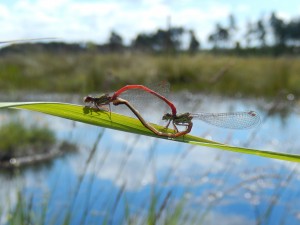
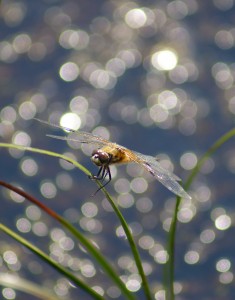
Many of the Odonata were busy laying eggs, from the Skimmers to the damselflies. One or two Black Darters were about: they can be here in large numbers later in the season.

On the sandy heath, the Sand-Wasp Ammophila sought her insect prey, her distinctive shape almost dragonfly-like with an extremely elongated red waist leading to a plump ‘tail’ to her abdomen.
Overhead, a Hobby dashed and stooped, handsome through binoculars, moustachioed, spotted below, its long scything wings like a giant Swift easily outpacing the fastest dragonfly. Below, a lizard rested unobtrusively at the edge of the boardwalk, ready to scuttle into the heather at any threat; another a yard further on. A Reed Bunting rasped out its short scratchy song, skreek, skreek, skrizzick. A Curlew called once; a Skylark soared invisibly high into the blue, singing as if John Keats were at hand to report on the beauty of its song.
